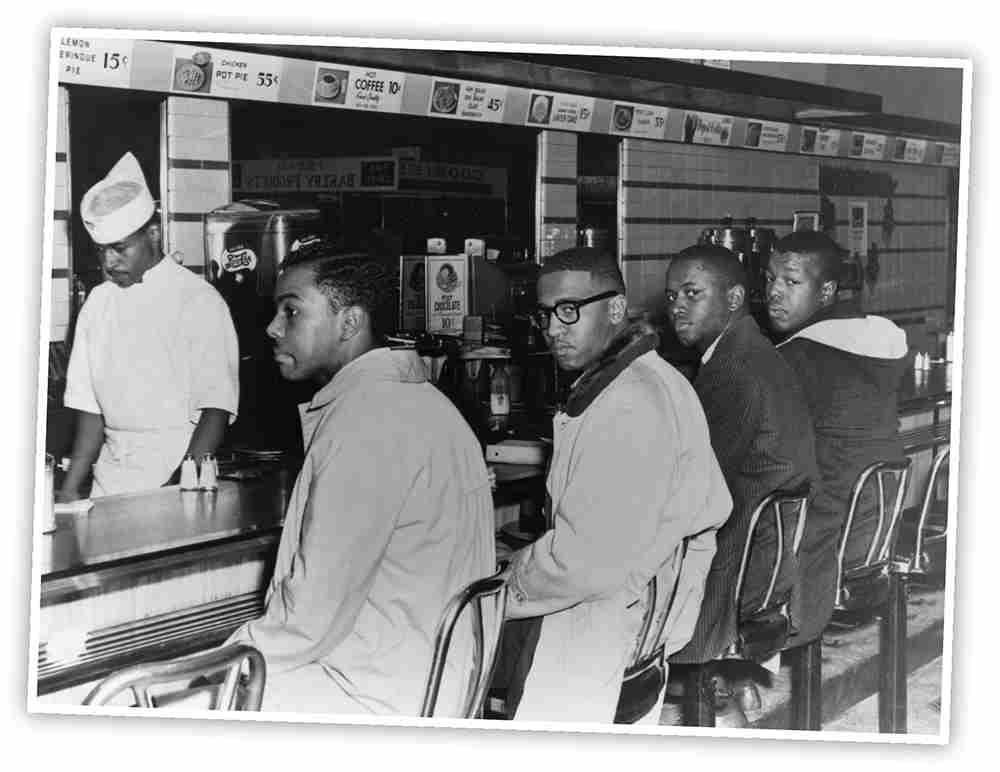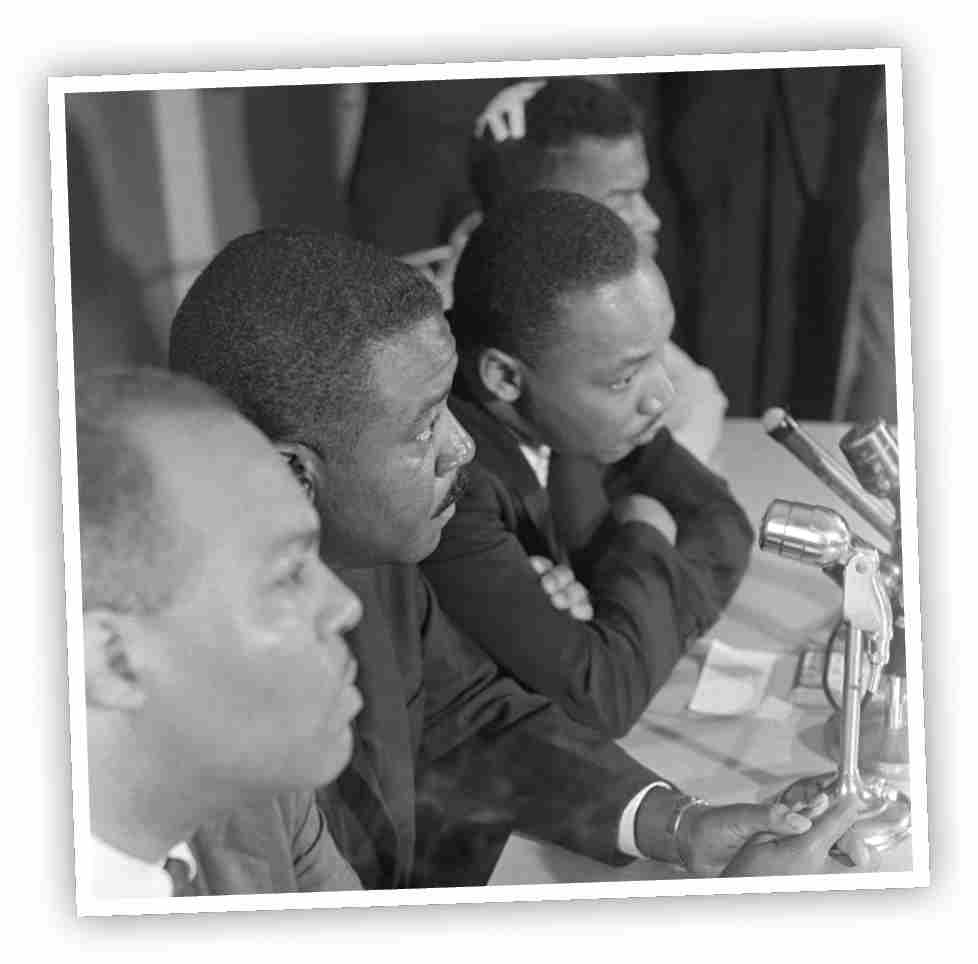CHAPTER 3

Riding for Freedom
“It’s going to be the young people,” says your roommate at Ohio’s Central State College. “Students like us will change things.”
It’s spring 1961. Your roommate is talking about how blacks and whites are not treated equally in the South. He has just returned from a workshop in Tennessee. He says there’s a peaceful protest movement going on. During the last year, you’ve heard about students “sitting in” at lunch counters. The students find places that serve only whites. They sit at the stools and tables until the business agrees to serve black customers.
In February 1960, four students held a sit-in at the Woolworth’s lunch counter in Greensboro, North Carolina.
You believe all people are equal. You want to learn more. Your roommate tells you about a student group called the Student Nonviolent Coordinating Committee (SNCC). You join the group. John Lewis, Diane Nash, and other SNCC members are planning more training workshops. You can’t wait to attend one of them.
From left: James Farmer, Ralph Abernathy, Dr. Martin Luther King Jr., and John Lewis helped organize the student protests.
Back at college, your roommate asks you to come to Atlanta, Georgia, with him the next weekend. He’s going to a sit-in at a drugstore lunch counter.
You want to work for change, but you’re not sure that you’re ready. Sitting sounds easy enough, but what if there is violence? Some students have been arrested. And one of the lawyers for the students, Z. Alexander Looby, had his house bombed.
To wait for more training before you start protesting, press here.

